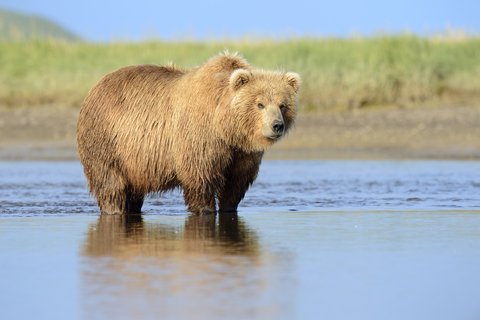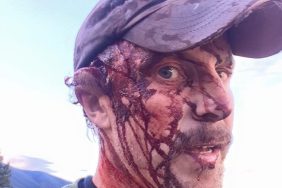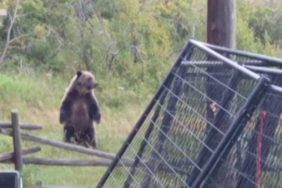The new movie The Revenant is based on the true story of Hugh Glass, a mountain man mauled by a grizzly bear in 1823 and left for dead by his companions.
Glass survived by crawling and stumbling 200 miles to the nearest settlement. While mountain men like Glass are a thing of the past, there’s still a healthy population of grizzly bears in the western United States. So healthy that they may soon be removed from the federal endangered species list.
Fear of bears shouldn’t keep you out of the woods, but if you do go into grizzly country Western Wildlife Outreach offers some safety tips:
- Don’t hike alone. This assumes you can choose better companions than Glass did.
- Carry bear spray. This is your standard self-defense pepper spray, only much bigger. Use it before the bear gets within 25 feet. You’re not trying to blind him; you want to put out a bad smell that will encourage him to go away.
- Make noise on the trail. Problem encounters usually stem from surprising a grizzly. Safety tip: surprising a grizzly bear is bad. Very bad. Making noise may not enhance your wilderness experience, but it can prevent an unpleasant interaction with Mother Nature. Some people wear bells.
- Never run from a grizzly. This sounds counter-intuitive, and is probably difficult advice to follow. But running can trigger a bear’s impulse to chase, a behavior you really don’t want to encourage. And bears can run faster than you.
- Give the bear space. If you see a bear respect his need for space. Make a wide detour or leave the area. If you’re dumb enough to ignore this advice you probably deserve having a bear go Hugh Glass on you.
- Speak to the bear in a low monotone so he can identify you as human. Western Wildlife does not suggest what to actually say to the bear, but avoid insults.
- Wear a backpack. This will provide some protection if the bear starts chewing on you.
- Do the “Drop and Cover.” If the pepper spray doesn’t work, drop to the ground and play dead. Your backpack will provide some protection to your back. Lie on your stomach, clasp your hands behind your neck, and use your elbows and toes to avoid being rolled over. If the bear does roll you over, keep rolling until you land back on your stomach.
- The “Drop and Cover” works well when a bear is defending itself. Unfortunately, on rare occasions the bear’s intent is to eat you. In this case lying on the ground imitating lunch may not be the best strategy. Western Wildlife helpfully suggests that “If the bear does not respond to aggressive actions such as yelling, throwing rocks and sticks, etc., you should be prepared to physically fight back if it attempts to make contact.” How one would actually “fight back” with bare hands against a 600-pound grizzly is left to the reader’s imagination.
- Climb a tree. Actually this advice is offered rather half-heartedly, as WW points out that since bears also can climb trees “it is no guarantee of safety.”
Seriously, bear attacks are extremely rare, and the survival rate when they do occur is extremely high. In any wilderness situation you just need to stay alert, be smart, and you’ll be fine.








